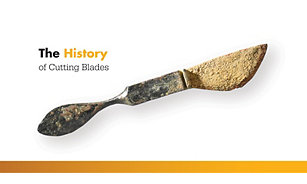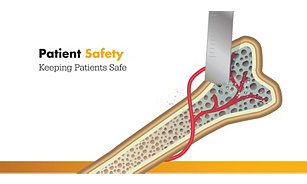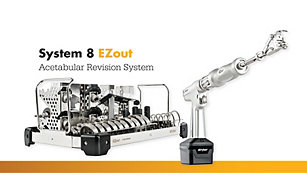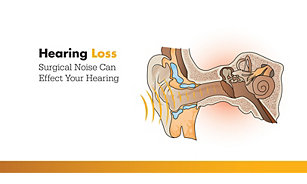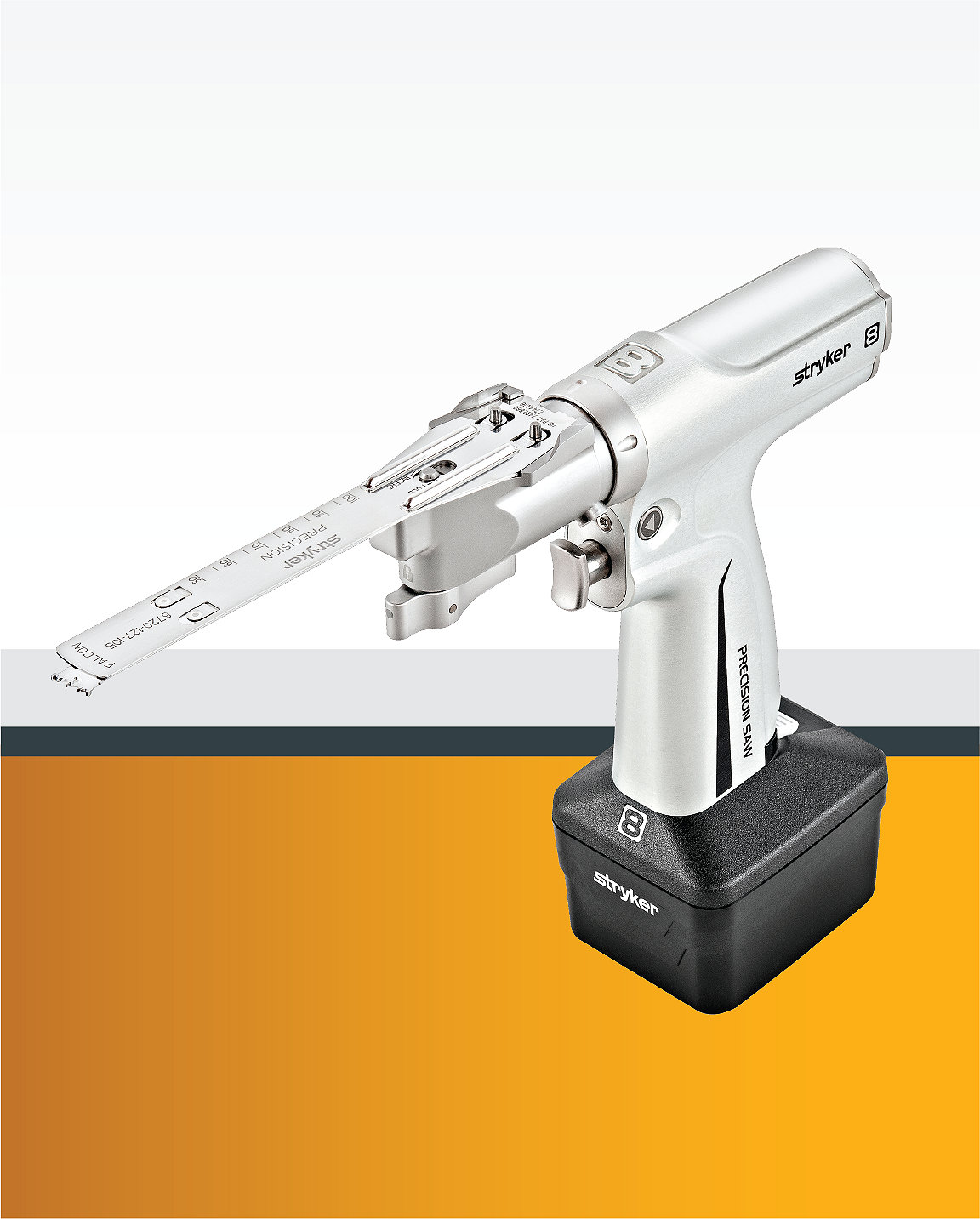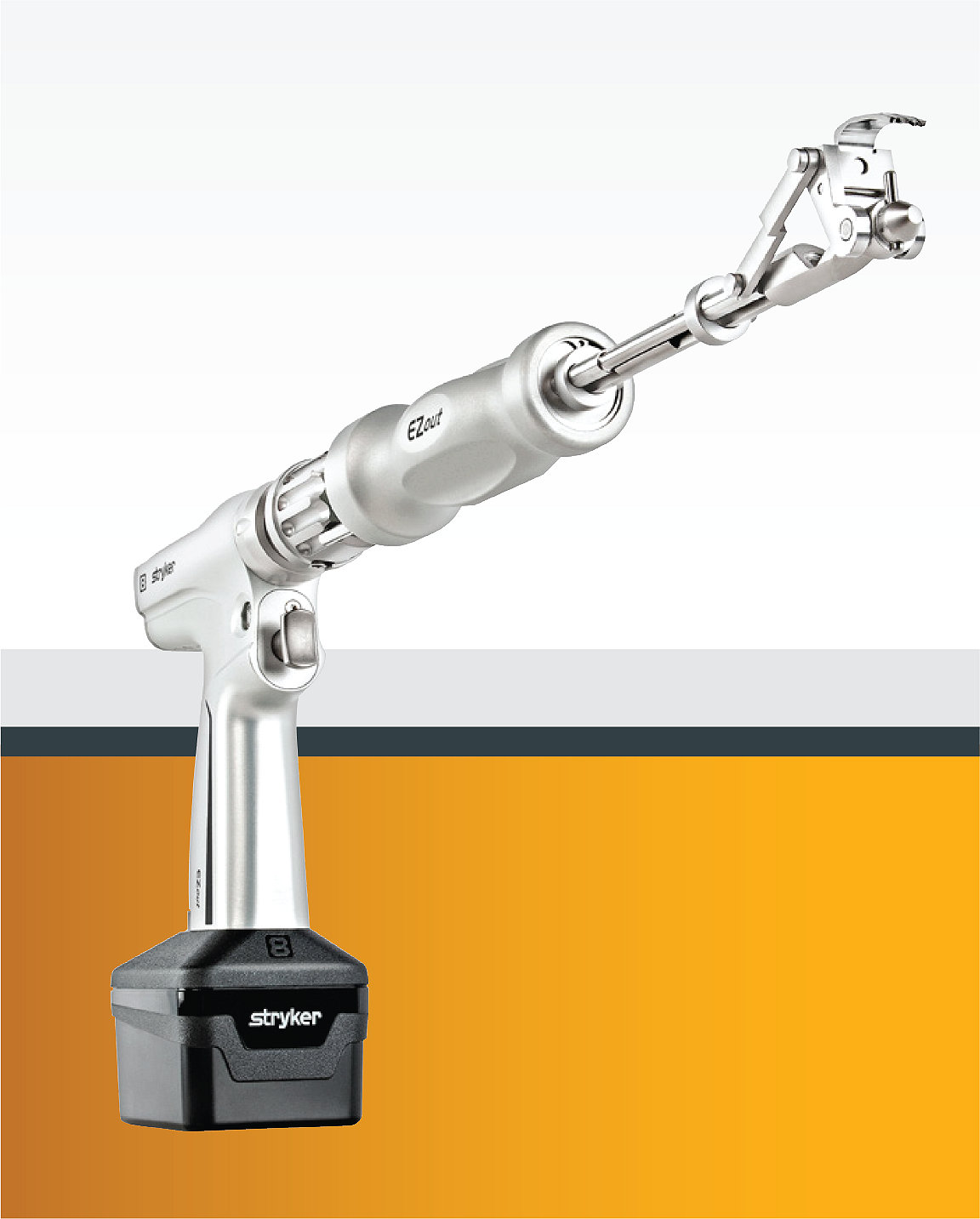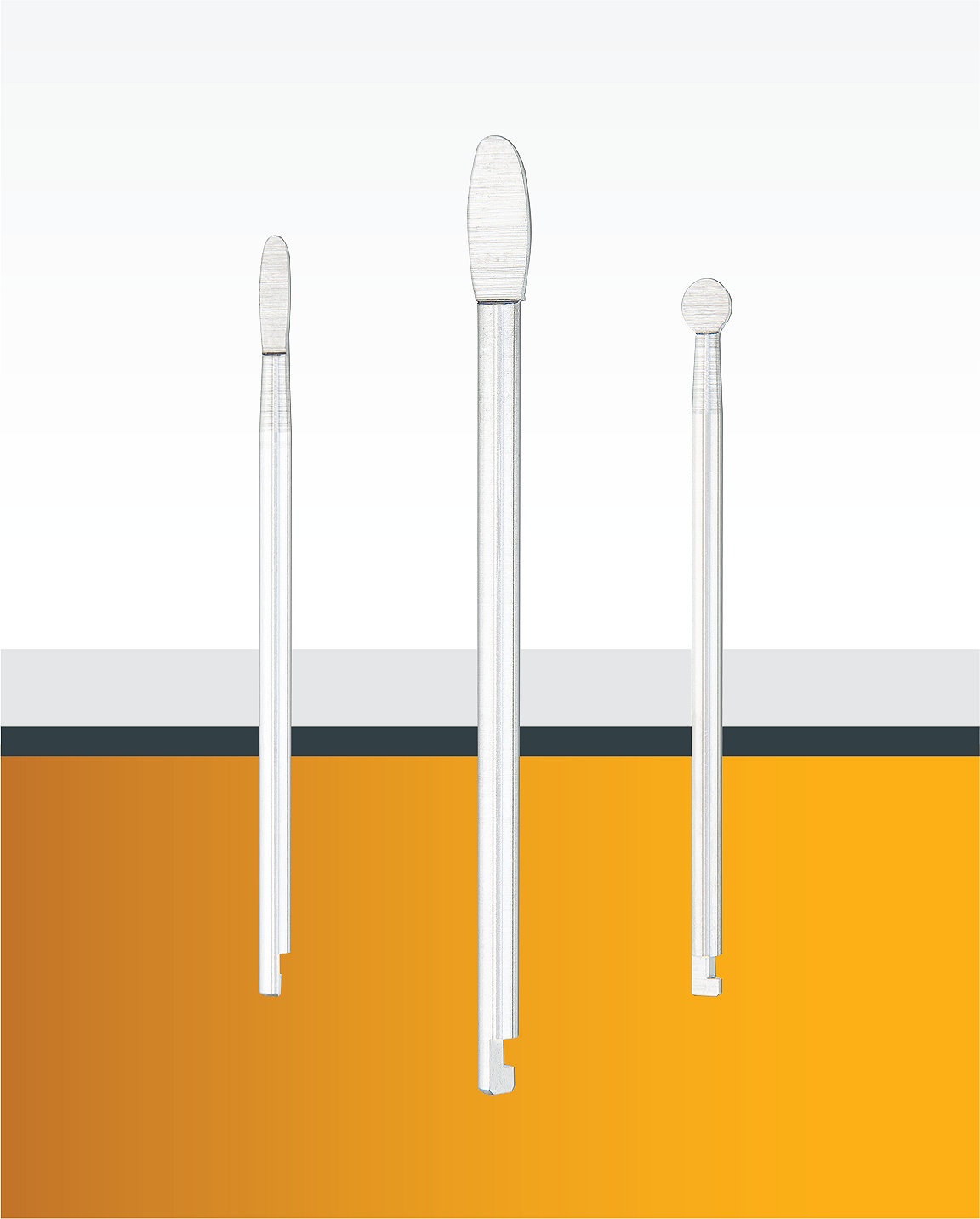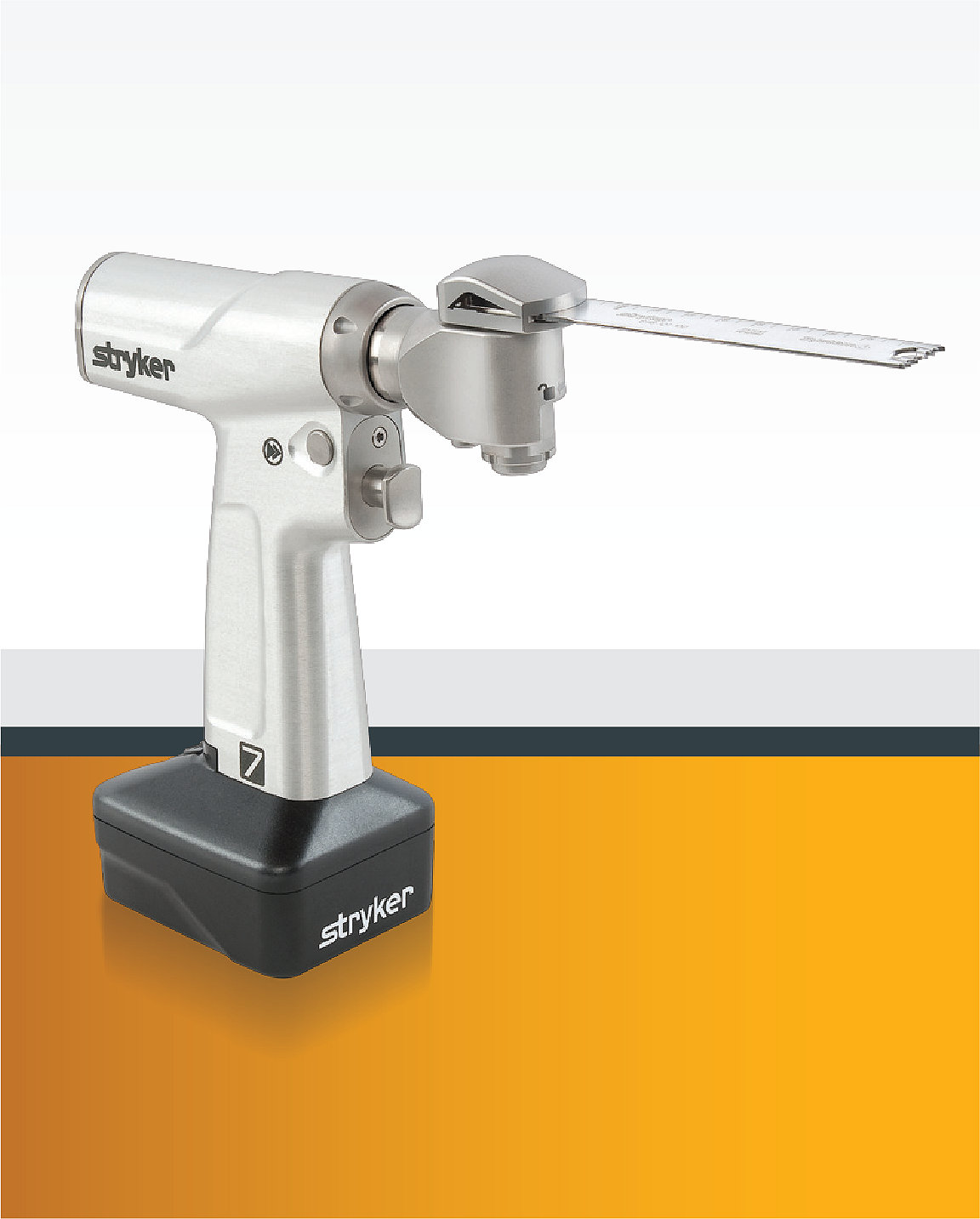EZout Powered Acetabular Revision System
25-Jan-2021
The current state of hip replacement revision surgery is often, in a word, barbaric.
There are over 45,000 acetabular revisions performed each year in the United States and, for many orthopaedic surgeons, they are time-consuming, physically exhausting and potentially even dangerous for patients.[1]
The amount of force and effort that’s required to remove the cup from the bone is more closely related to tearing up tile from a bathroom floor than removing a worn out cup from a living, breathing patient’s pelvis.
Often after a revision surgery, surgeons will walk out of the operating room absolutely drenched in sweat from trying to remove the cemented socket from the hip bone.
This, obviously, has ramifications for surgeons who typically have over three surgeries to perform every single day, but also for the patients who are undergoing this rigorous surgery.
In this article, we’ll discuss the current state of acetabular revision surgery in most hospitals across the world, the impact that it can have on patients and outcomes and, finally, the way that a new blade can make the process more efficient, less physically draining and safer for all parties involved.
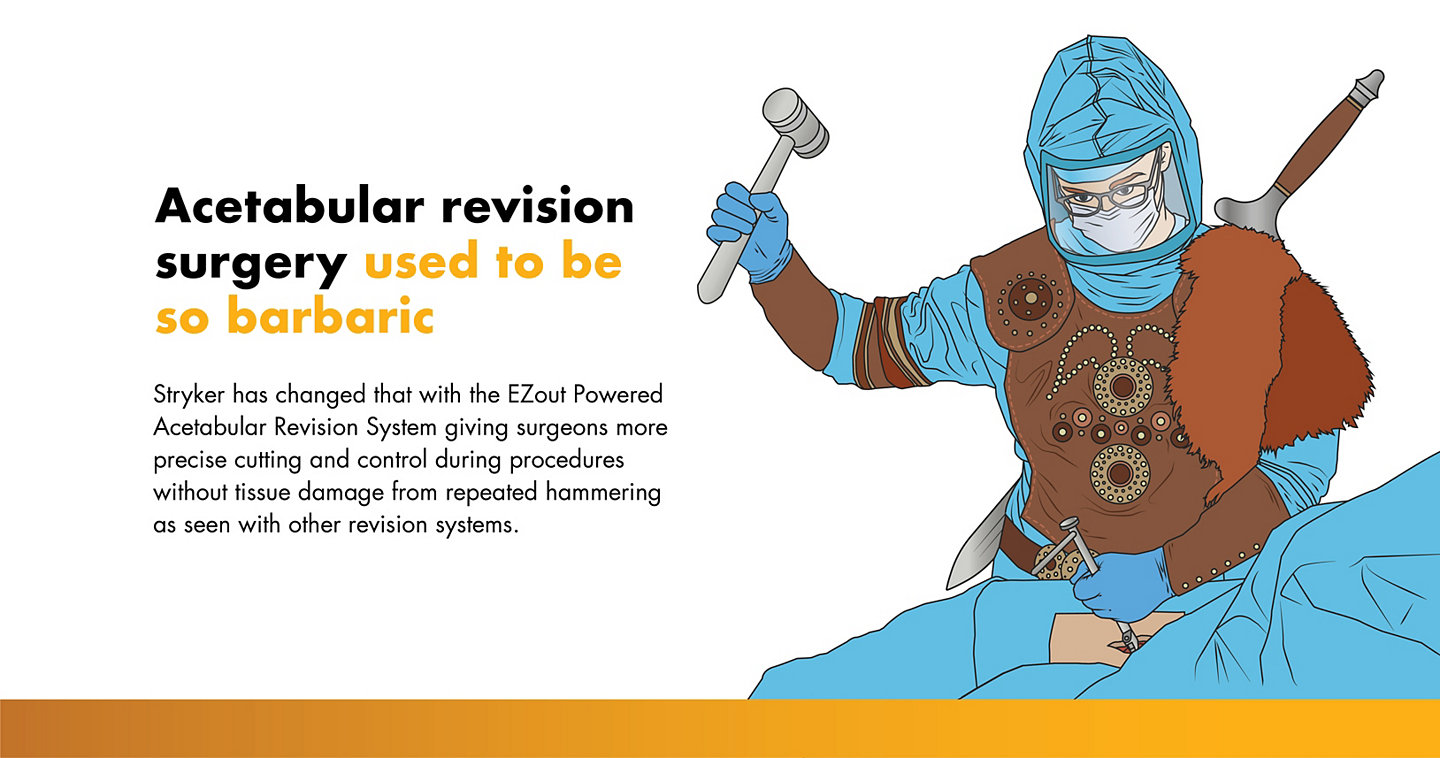
The problems currently surrounding implant removal methods are two-fold: not only is the surgery physically taxing, but it also requires a substantial amount of space around the implant in order to successfully maneuver the surgical tools.
Up until quite recently, the acetabular cup removal procedure has typically used the Zimmer Explant Acetabular Cup Removal System, which requires a hammer to be used to pound a long metal handle with a curved blade into the peripheral bone surrounding the cup.[2] This process has to be repeated several times in order to loosen the bone around the implant and effectively remove it.
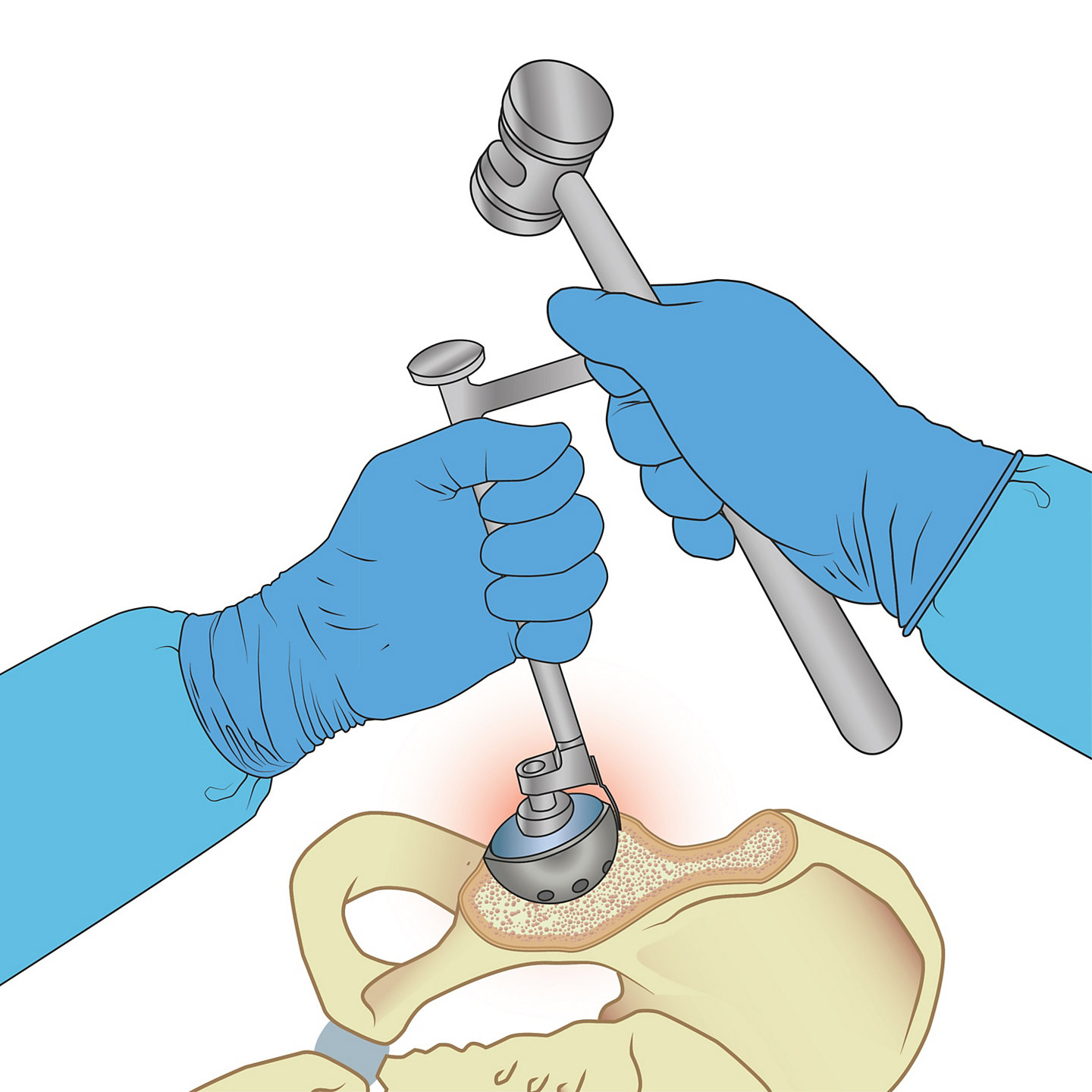
Zimmer explant acetabular cup removal
Traditional acetabular cup removal requires surgeons to repeatedly hammer the cutting blade into the surrounding bone to remove the acetabular cup.
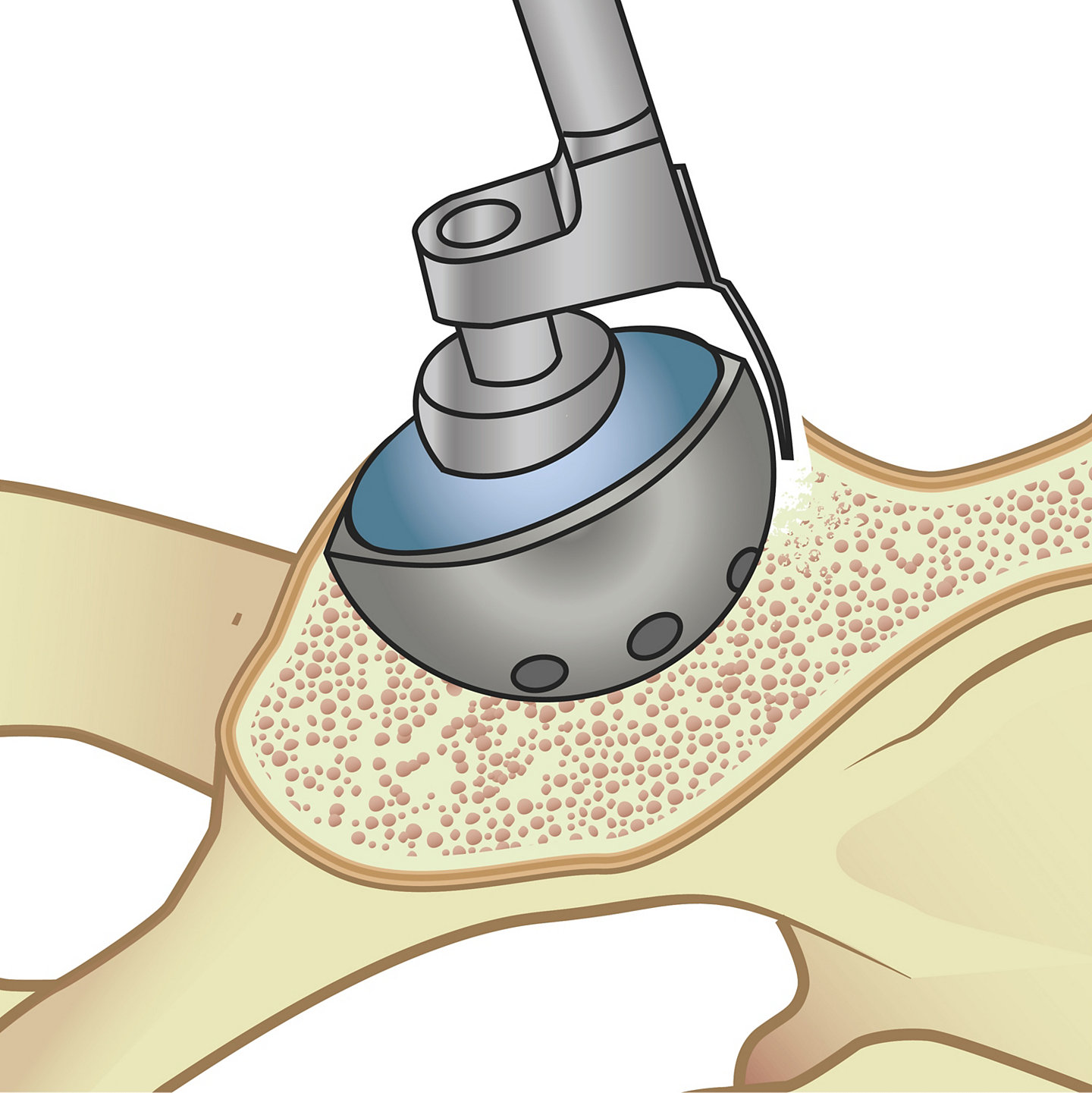
Acetabular cup removal detail
Repeated hammering to remove the acetabular cup compresses surrounding bone tissue and generally results in having to use a larger than needed replacement acetabular cup.
But even the strongest doctor will have to exert substantial physical energy while hammering in order to carve out the space between the pelvic bone and the implant.
Similarly, the long L-shaped handle of the removal tool, which needs to be rotated 360 degrees during the surgery to ensure full separation of the cup from the bone, requires a large workspace in order to complete the procedure.
In a world where this kind of time, energy, and space is not always possible, the safety of the patient could be compromised, which is why choosing the right tool is so important.
Hip replacement cups are specifically designed with a porous surface that is intentionally designed to promote bone growth around the cup in order to help hold it in place and keep the tissue around it healthy. This, however, makes the cups very difficult to remove without causing further damage to the surrounding bone and soft tissue.
One of the main risks in traditional hip replacement surgery is unintentionally removing the cup with large amounts of bone residue still in tow.[4]
Another, much more serious risk, is the potential of cracking the pelvis bone while trying to extract the acetabular cup. The amount of force that’s required in a traditional revision surgery can be high, and this, coupled with poor or weakened bone strength or arthritis, can lead to an intraoperative fracture.[5]
While these instances are relatively rare, they can be devastating and almost always require additional surgery to correct.
Also not to be ignored is the fact that surgeons are the ones required to expend the energy in removing the cup from the patient’s hip and performing the replacement. As has been mentioned, this procedure often requires a significant amount of energy and can leave surgeons feeling physically exhausted and burnt out.[6] This can be especially dangerous as orthopaedic surgeons perform an average of three to five surgeries a day.
Advancements in surgical technology, especially in orthopaedics, could allow surgeons to operate more quickly, safely and effectively without expending as much physical effort as is often required.

The Stryker EZout Powered Acetabular Revision System is a power saw attachment for the Stryker System 8 Power Tool System. The EZout attachment does just what its name implies: its saw blade cuts through the bone and hard tissue around the bone-to-cup area, allowing for a clean and easy extraction.[7]
In order to carry out the acetabular cup removal as quickly and accurately as possible, the EZout system features a three step process to ensure that the surgeon is using a correctly sized blade: (1) Remove the liners and screws of the cup, (2) Use the Stryker measuring tool to size the centering cup, and (3) Size the blade according to the outer diameter of the cup.
Step 1
Remove the liner/screws
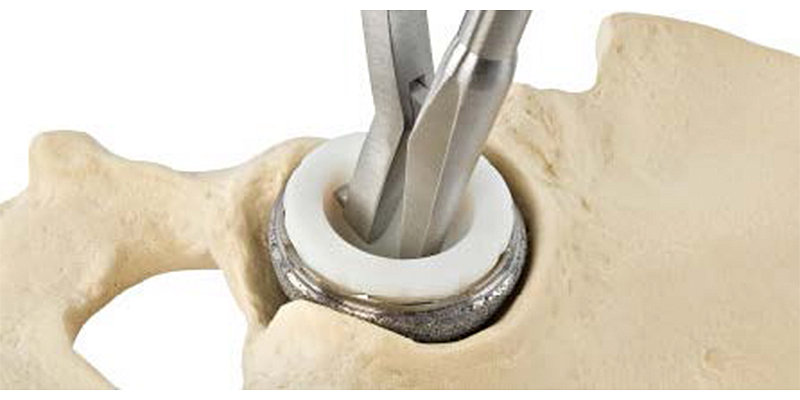
Also, identify whether any fins or spikes are present and will need to be cut around.
Step 2
Size the centering plug
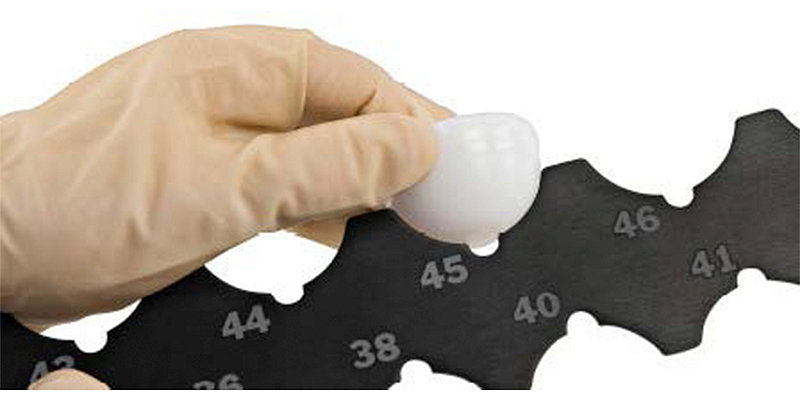
The centering plug size is determined by the outer diameter of the liner. Use the plug sizing template to select and install the appropriate centering plug.
Step 3
Size the blade
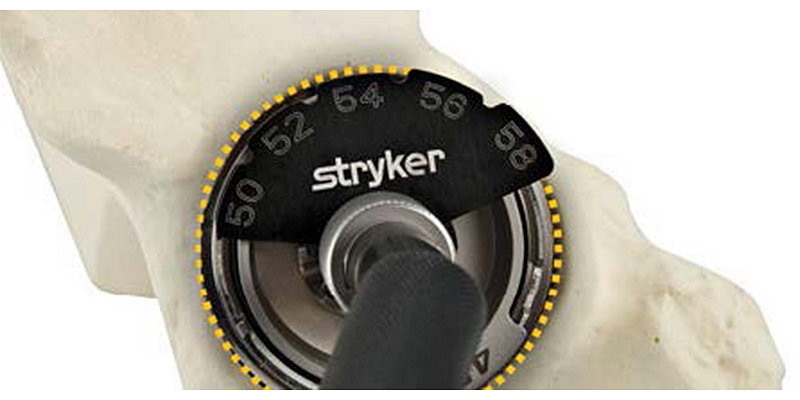
The blade size is determined by the outer diameter of the cup. Determine the blade size by comparing the edge of the implanted cup to the blade sizing tool.
Once you have fastened the right size centering cup into the acetabular cup and blade onto the Stryker System 8 Power Tool, the fourth and final step is to remove the cup.
The surgeon will pull the attachment handle toward the handpiece to fully retract the blade and insert the attachment into the centering plug. Next, a simple pull of the trigger will engage the oscillating short blade with the bone by gently sliding the attachment handle toward the cup while vigorously rotating the handle back and forth.
Once the short blade has successfully made its way around the circumference of the cup, the surgeon will remove the short blade and switch to the long blade, which is designed to reach around the entire underside of the cup and free it from the surrounding bone socket--with minimal bone fragment in tow. The green indicator ring will be flush with the back of the attachment to confirm the full depth of the blade.
The oscillating movement of the blade not only removes the cup from the surrounding bone quickly, but also replaces the need for hammering, minimizes the space needed to perform the procedure, and reduces the amount of time that the procedure takes.
Step 4
Remove the cup
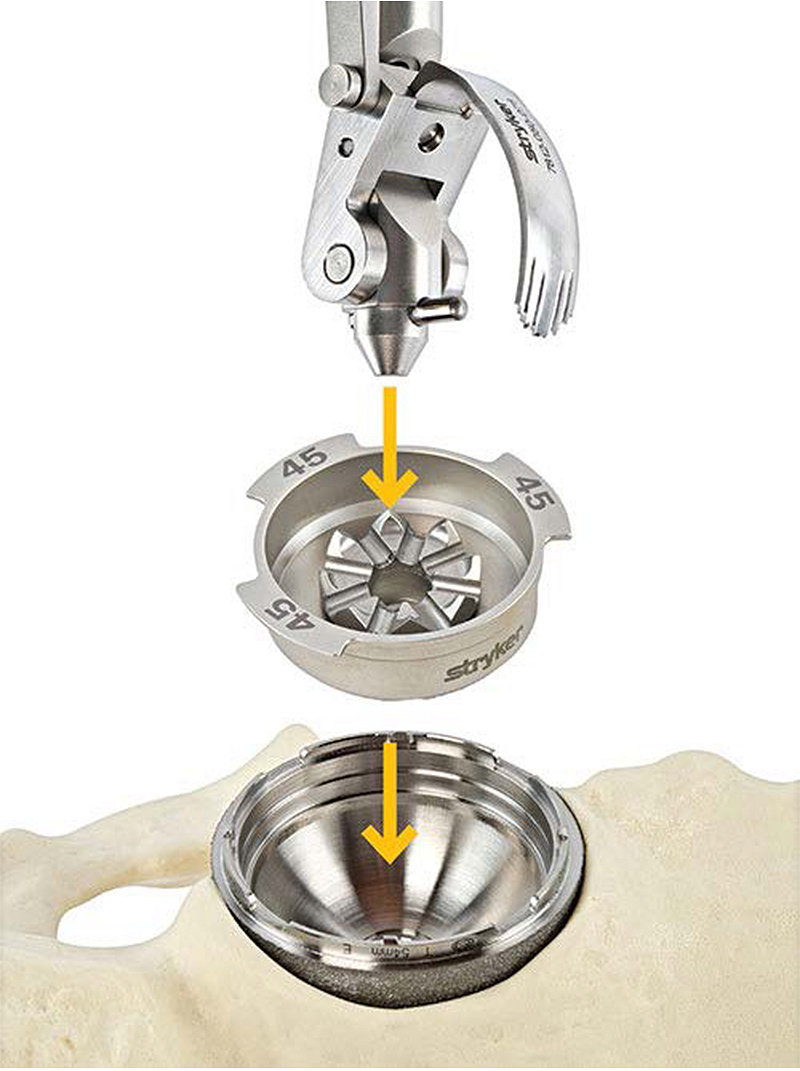
Pull the attachment handle toward the handpiece to fully retract the blade and insert the attachment into the centering plug.
Step 2
Size the centering plug
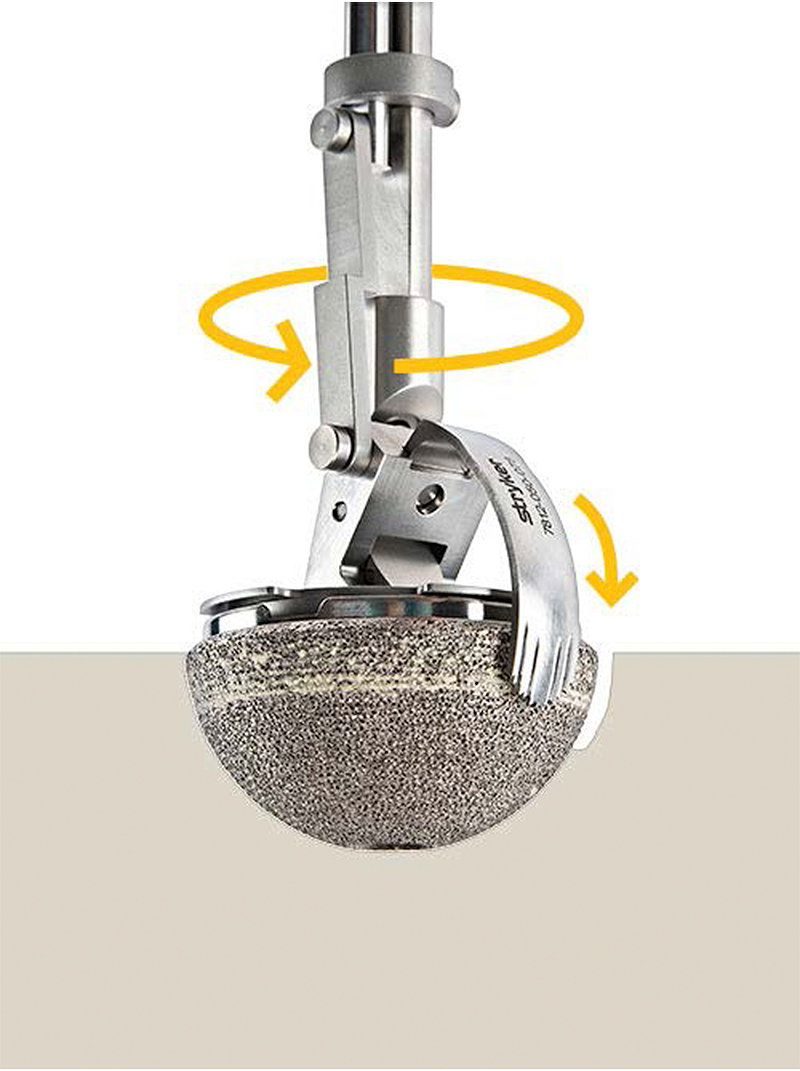
Fully retract the blade, then engage the trigger to oscillate the blade. Engage the blade with the bone by gently sliding the attachment handle toward the cup while vigorously rotating the handle back and forth.
Step 3
Size the blade
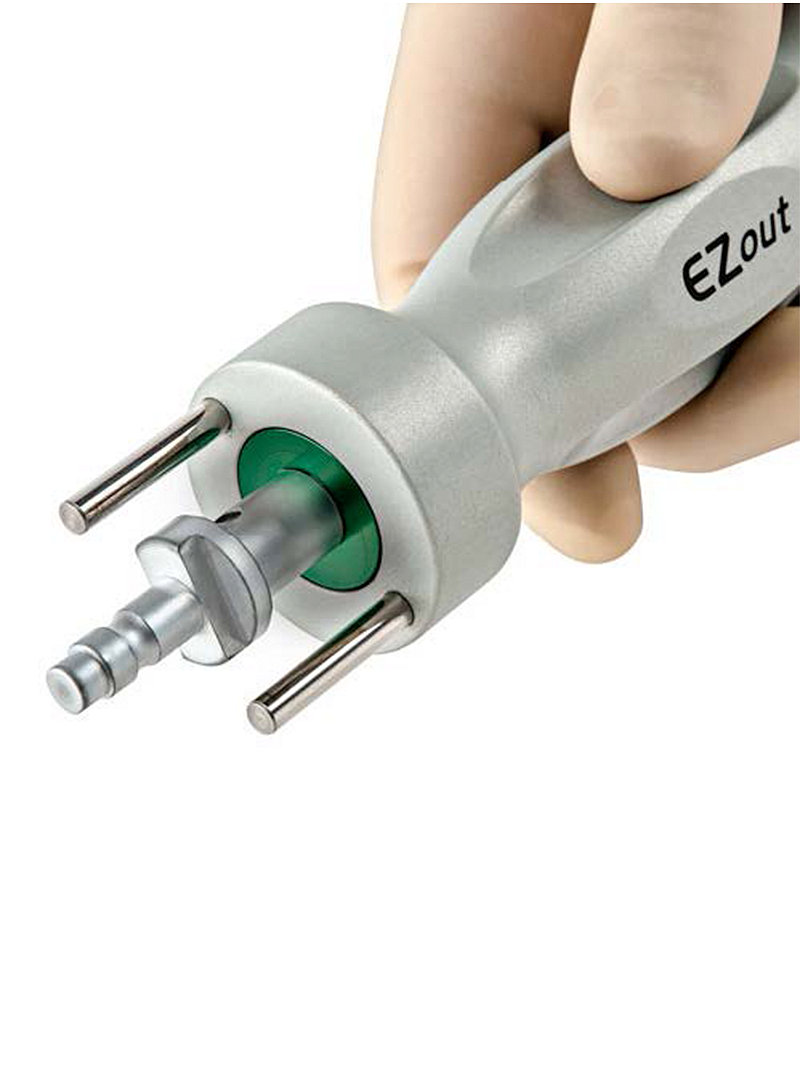
Always verify that the short blade can move freely around the entire circumference of the cup before switching to the long blade. Ensure the green indicator ring is flush with the back of the attachment to confirm full depth.
One of the tools that hospitals have historically used for acetabular revision surgery is the Zimmer Explant Acetabular Cup Removal System, which utilizes the hammer-handle combination that has been shown to produce a lot of force on the pelvic bone.
In a study comparing the efficiency and efficacy of the Zimmer system with the Stryker’s EZout, a surgeon performed acetabular cup removal with both tools to see which was more efficient at removing the cup in terms of time and effort as well as which required less force and temperature.8
Six foam models were used in total for in vitro testing; three models were designated for testing with the EZout System, and three were tested with the Zimmer Explant System. The models were made of foam with a density of 0.48 g/cc, resembling that of a human pelvic bone.
The results of the study were fascinating:
For one, the study found that “the difference in energy transferred during hammering with the Zimmer System was 3x greater than pushing with the Stryker System.”[9]
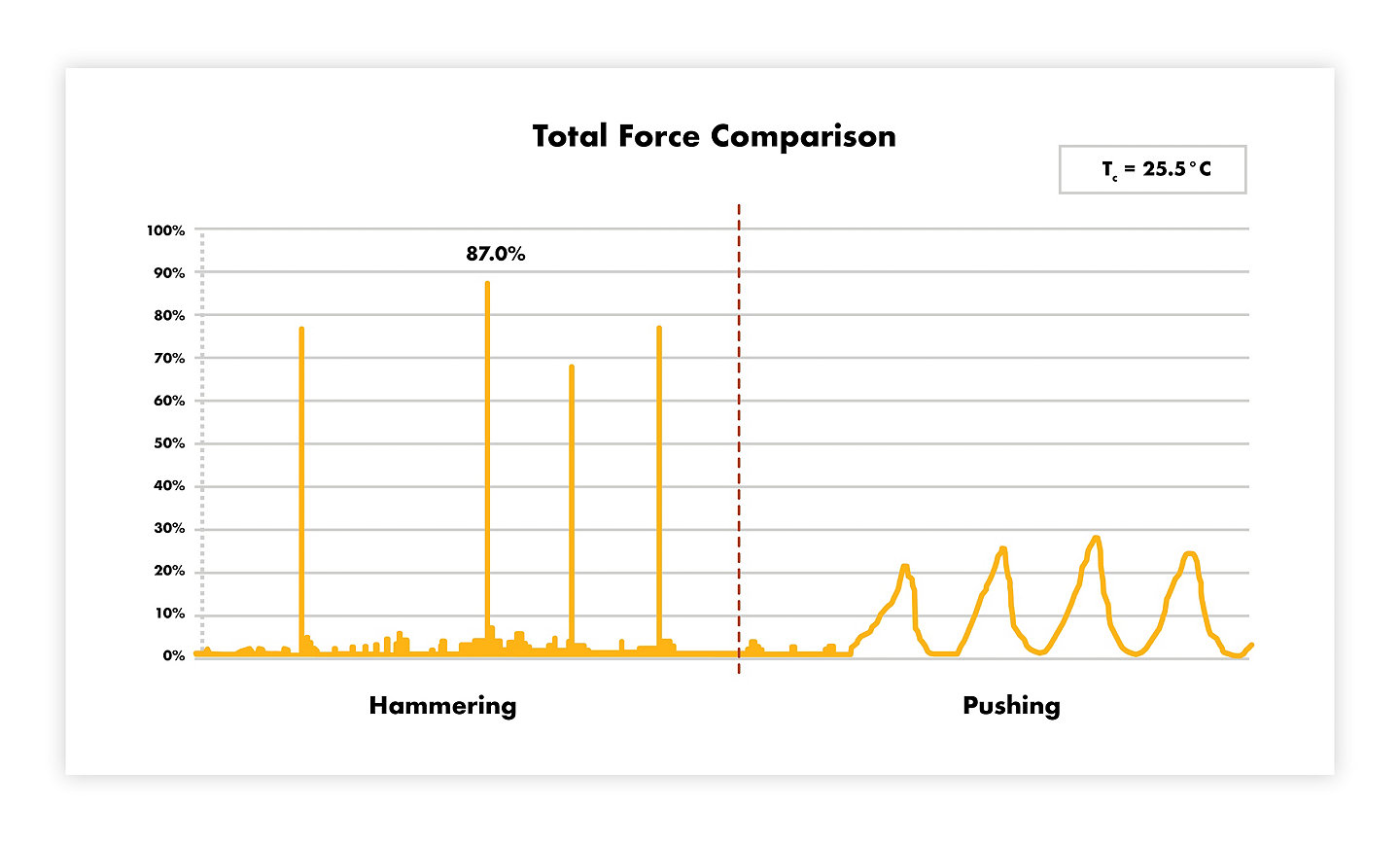
Second, EZout required less exerted force from the surgeon in the removal of the cup and less overall time complete.[10]
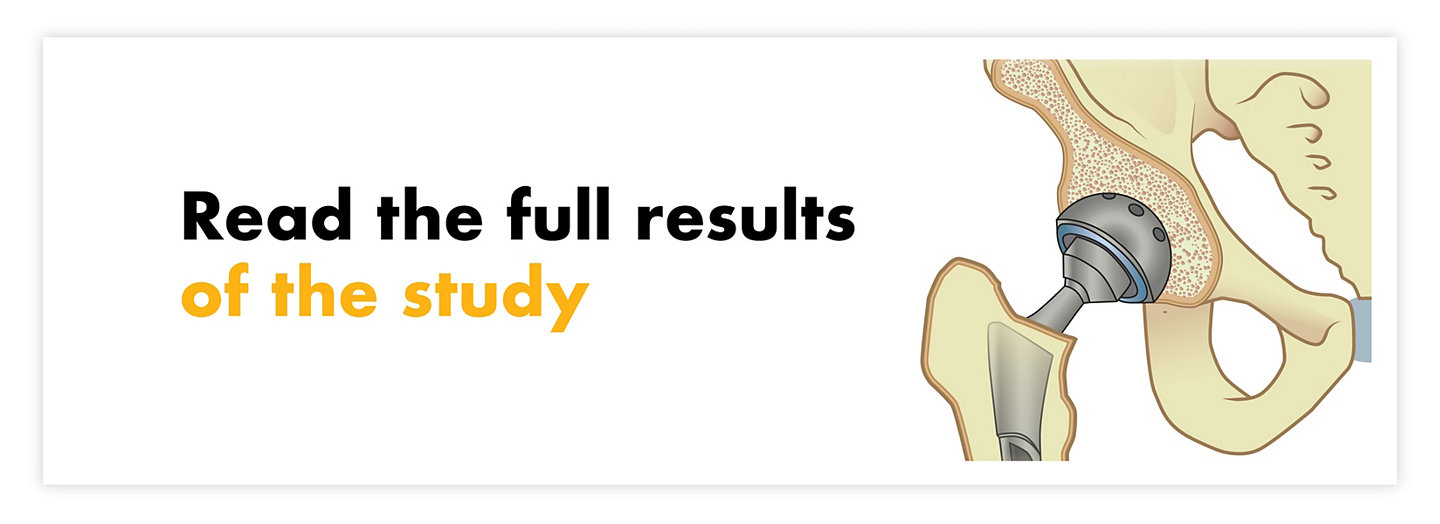
Patients put an incredible amount of trust in the hands of their surgeon when they lay down on the operating room table for an acetabular revision surgery. They expect to be cared for and dealt with in a manner that not only gives them a positive, long-term outcome, but also protects them inside the operating room.
Therefore, it’s almost shocking to imagine that, in an industry that is growing more and more sophisticated and technologically advanced, surgeons would still be swinging a hammer onto a metal rod in order to remove a cup. It seems outmoded at best, barbaric at worst.
Over the years, hospitals have made great steps in acquiring technology and putting patient safety at the forefront of what they do, but there is still need for improvement in the area of hip revision surgeries.
Fortunately, there is a better way. A better tool that allows these procedures to be completed more efficiently and effectively, without jeopardizing the safety of the patient.
The technology is available, but surgeons and hospitals need to be willing to adopt it.
[1] Gwam CU, Mistry JB, Mohamed NS, Thomas M., Bigart KC, Mont MA, Delanois RE. Current epidemiology of revision total hip arthroplasty in the United States: National Inpatient Sample 2009 to 2013, J Arthroplasty 32, no. 7 (July 2017) 2088-2092, https://www.sciencedirect.com/science/article/pii/S088354031730164X.
[2] https://pdf.medicalexpo.com/pdf/zimmer/explant-acetabular-cup-removal-system-surgical-technique/74894-120929.html.
[3] Kwong, L., Billi, F., Keller, S., Kavanaugh, A., Luu, A., & Paprosky, W. (2019). A Comparative Study Between the Stryker EZout Powered Acetabular Revision System and the Zimmer Explant Acetabular Cup Removal Systems. Techniques in Orthopedics, 1. doi: 10.1097/bto.0000000000000409
[4] Cedars Sinai. Revision hip surgery, accessed Dec. 18, 2019, https://www.cedars-sinai.org/health-library/diseases-and-conditions/r/revision-hip-surgery.html.
[5] Ibid.
[6] Ames SE, Cowan JB, Kenter K, Emery S, Halsey D. Burnout in orthopedic surgeons: A challenge for leaders, learners and colleagues: AOA critical issues, J Bone Joint Surg Am. 2017 Jul 19;99(14):e78, https://www.ncbi.nlm.nih.gov/pubmed/28719565.
[7] https://www.strykermeded.com/media/2649/ezout-technique-guide.pdf
[8] Kwong L., Billi F., Keller S., Kavanaugh A., Luu A., Paprosky W. A comparative study between the Stryker EZout powered acetabular revision system and the Zimmer explant acetabular cup removal systems, 1-8,
[9] Ibid, 6.
[10] Ibid, 1-8.
D0000023496 Rev AA
2021-28367

